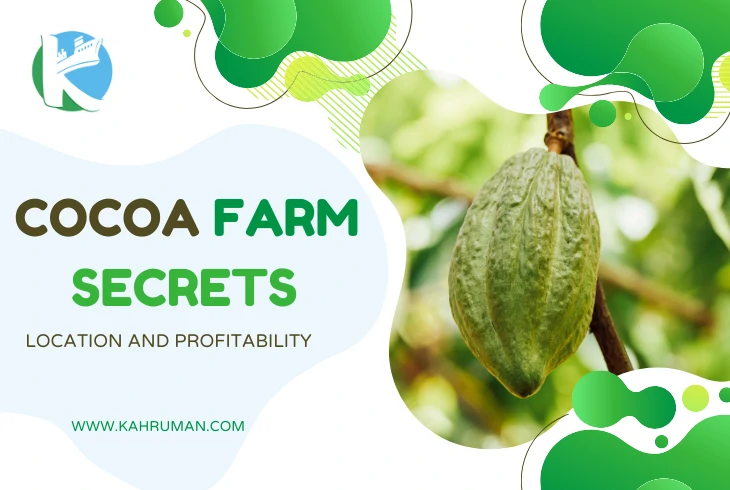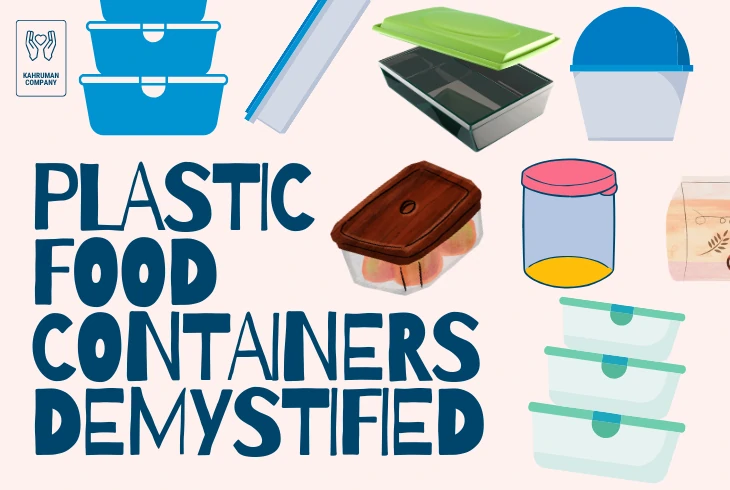Facts about cocoa farms
Cocoa farms are critical sources of income for millions of farmers worldwide. These farms are small, with an average size of 1-2 hectares, and are located in rural areas. Cocoa farming is difficult. Farmers usually do the work by hand, like planting, picking, and preparing the cocoa. They plant other trees, like bananas, plantains, or hardwoods, next to the cocoa farms.
This helps the cocoa farms grow better and be healthier. The trees provide shade, which helps the cocoa farms grow better. Lots of farmers use organic farming methods to keep the soil healthy to reduce the use of chemicals in cacao farms. This helps to make sure the crops are safe and good to eat.
The cocoa farming industry is trying to make sure it lasts a long time by doing things that are good for the environment and for farmers. They want to help the farmers make more money and keep things like trees and water clean. A big problem is the weather changing, so the industry is trying to do something about it. Most of the cocoa farms are in West Africa, especially in Cote d'Ivoire and Ghana. The industry is working to make sure that farming cocoa is possible for a long time. And that it helps both the farmers and the people who like to eat chocolate cocoa products.
Read our article: What is economy shipping?
Where are cocoa farms located?
Cocoa farming is a big industry that happens in many different countries around the world. West Africa is the biggest cocoa producer, but other places like Central and South America, Asia, and the Pacific Islands also grow a lot of cocoa. Countries like Brazil, Ecuador, and Colombia are important cacoa producers in South America.
Although cocoa farming is a widespread industry, producing high-quality cacoa requires specific growing conditions and careful cultivation. Ideal cocoa growing conditions are found in regions close to the equator, with warm temperatures and ample rainfall. Knowledge of the locations of cocoa farms is vital for anyone interested in producing and sourcing chocolate. This knowledge enables chocolate manufacturers and other stakeholders to track the origins of their cocoa and ensure that their supply chains are sustainable and ethical. As such, the global distribution of cocoa farming is essential to the chocolate industry and those involved in it.
How is cocoa farms grown and harvested?
Cocoa is grown and harvested in some steps, which are carried out by farmers. Here is an overview of the cocoa growing and harvesting process:
Planting: To grow cocoa farms, farmers first plant seedlings in special areas called nurseries. After a few months of growing, the farmers move seedlings to the main cocoa farms. Cacoa trees need a warm and humid climate to thrive, so they are grown in areas close to the equator.
Growing: Cocoa farms can take several years to mature and begin producing fruit. Once mature, cocoa trees produce pods, which grow on the trunk and branches of the tree. The pods are usually harvested two to three times a year.
Harvesting: Farmers harvest cocoa pods by hand, using machetes or other tools. . The pods are carefully cut from the tree to avoid damaging the trunk or branches. Once harvested, the pods are opened, and the beans inside are removed.
Fermentation: The fresh cocoa are fermented in piles or boxes for several days. Fermentation is an important step in the process, as it helps to develop the flavor and aroma of the cocoa in the future.
Drying: After fermentation, cocoa nibs are left in the sun to dry for several days.The drying process must be done with care. so the beans are not over-dried.
Sorting and Grading: When the cocao beans are dried, they are sorted and graded based on their size, quality, and other factors. This is an important step to ensure the cocoa nibs meet the quality standards required by chocolate makers.
Roasting: Chocolate makers roast the cocoa to make them taste and smell better, not the cocoa farmers.
Nestlé cocoa farms
Nestlé buys a lot of cocoa from different countries, including Côte d'Ivoire, Ghana, Nigeria, and Cameroon. They have a plan called the Cocoa farms Plan to make sure the cocoa they buy is grown in a way that helps the farmers, the environment, and the quality of the cocoa. Nestlé works with cocoa farmers, cooperatives, and suppliers to teach them how to farm sustainably, improve education and healthcare, and make more money from selling cocoa. They also have programs to help girls and boys have the same opportunities and to stop child labor. Nestlé also has cocoa farms in Central and South America where they do research on new types of cocoa and farming methods and teach cocoa farmers new skills.
How many coacoa trees per acre?
The number of cocoa trees per acre can vary depending on several factors, such as the planting method by farmers, the spacing between the trees, the variety of cocoa tree being grown, and the environmental conditions in the region.
In general, cocoa trees are planted at a distance of around 10-15 feet (3-4.5 meters) apart from each other. This translates to about 110-180 trees per acre (270-445 trees per hectare), assuming the trees are planted in rows with a spacing of 10-15 feet between rows.
However, some cocoa farms growers may plant their trees at higher densities, with as many as 300-400 trees per acre (740-990 trees per hectare). This can increase the yield of cocao farms per acre but may require more intensive management and maintenance.
Cocoa farms is typically grown on small family farms, with most farms ranging in size from 1 to 5 hectares (2.5 to 12.5 acres). The growing conditions for cacoa require a combination of warm temperatures, high humidity, and plenty of rainfall, with the ideal climate being characterized by temperatures of around 25-30°C (77-86°F) and annual rainfall of around 1,500-2,000 mm (60-80 inches).
Cocoa Farming in West Africa
Cocoa farming is a major source of income for many farmers in West Africa, particularly in countries like Côte d'Ivoire.
The chocolate industry has some problems like deforestation and child labor, so some companies are helping cocoa farmers adopt sustainable and ethical farming practices through their sustainable sourcing initiatives. This includes training and supporting farmers, promoting healthy living, and improving livelihoods. During cocoa processing, fermentation is an important step where natural cocoa beans are left to ferment for a few days on family farms.
For these initiatives to succeed, companies must be willing to pay more for sustainably produced cocoa and farmers must be able to create a sustainable living. By supporting cocoa farming, positive change can be brought to African communities, creating income and opportunities for generations of farmers.
Cocoa farming in Ghana
Cocoa farming is a vital source of income for millions of people in Ghana. The country is the second-largest producer of cocoa in the world, after Cote d'Ivoire. Here are some key facts about cocoa farming in Ghana:
History: Cocoa farming in Ghana dates back to the late 19th century when the first cocoa farms were established in the country's western region. Today, cacoa farming is a significant part of Ghana's economy, accounting for around 6% of the country's GDP and employing around 800,000 farmers.
Growing Regions: Cocoa is grown in several regions of Ghana, including the Western, Ashanti, Brong-Ahafo, Central, Eastern, and Volta regions. The Western region is the largest producer of cocoa in Ghana, accounting for around 60% of the country's cocoa production.
Smallholder Farmers: Cacoa farming in Ghana is predominantly carried out by smallholder farmers, who typically own or manage small plots of land. These farmers work hard to maintain their cocoa farms and ensure that their beans meet the quality standards required by chocolate makers.
Government Support: The Ghanaian government has played a significant role in supporting cocoa farming in the country. The government has implemented some policies aimed at improving the livelihoods of farmers, including providing subsidized fertilizers and pesticides, improving access to credit, and promoting good agricultural practices.
Sustainability: The cocoa industry in Ghana is increasingly focused on sustainability, with initiatives aimed at improving farmer livelihoods, promoting biodiversity, and reducing the environmental impact of cocoa production. The Cacoa Abrabopa Association (CAA), a Ghanaian cocoa farmer cooperative, has been working to promote sustainable cacoa farming practices in the country.
Challenges: Cocoa farming in Ghana faces a number of challenges, including pests and diseases, climate change, and low prices for cocoa nibs. The Ghanaian government and various organizations are working to address these challenges and ensure that cacoa farming remains a sustainable and profitable industry for farmers in Ghana.
Where is the best quality cocoa grown?
Ecuador.
That is because the best quality cocoa is generally considered to be grown in regions that offer optimal growing conditions for the cacao plant. These conditions include a suitable climate, soil, and altitude. As a result, most of the world's best-quality cocoa is grown in regions located near the equator.
Some of the most well-known regions for producing high-quality cocoa include West Africa, Central and South America, and Southeast Asia. Countries such as Ghana, Ivory Coast, Venezuela, and Indonesia are known for producing some of the finest cacoa beans in the world. The cacao from these regions are prized for their complex flavor profiles, which can include notes of fruit, nuts, and spice, as well as their aroma and texture.
Does all cocoa powder contain cadmium?
Not all cocoa powder contains cadmium, but some may. Cadmium is a heavy metal naturally occurring in soil and water, and cacoa plants can absorb it. Cadmium can be introduced into cocoa products during processing and production.
Cadmium is a toxic substance that can harm human health if consumed in large amounts over time. The European Union has established limits on the amount of cadmium present in cocoa products. Many factories and producers have taken steps to reduce the levels of cadmium in their cacoa products. It is essential for consumers to be aware of the potential presence of cadmium in cocoa products and to choose products that have been tested and meet established safety standards.
Which country has the most cocoa farms?
The country with the most cocoa farms is Côte d'Ivoire, also known as Ivory Coast. According to the Global Cacoa Institution, this West African nation is responsible for generally producing 40% of the world's beans. Other top cocoa-producing countries include Ghana, Indonesia, Nigeria, Cameroon, and Brazil.
Cocoa farming is a vital part of the world's economy in many countries, providing millions of people with income and employment space. However, the industry is plagued by low wages, child labor, and deforestation. Efforts are being made to address these issues and create more sustainable and ethical cocoa farming practices.
What is the best cocoa in the world?
Determining the "best" cocoa worldwide is subjective and varies depending on personal preferences and taste. However, several regions are known for producing high-quality cacoa beans sought after by chocolatiers and connoisseurs.
Some of the most renowned cocoa-producing regions include:
Criollo: Grown in Central and South America, especially in Venezuela and Peru, Criollo beans are the rarest and most flavorful of all cacoa varieties.
Forastero: The most widely grown cacoa variety, Forastero beans are mainly produced in West Africa, especially in Ghana, Ivory Coast, and Nigeria.
Trinitario: A hybrid of the Criollo and Forastero varieties, Trinitario beans are grown in countries such as Trinidad, Tobago, and Ecuador.
Nacional: Grown in Ecuador, Nacional beans are known for their floral and fruity flavors.
Ultimately, the best cocoa in the world depends on personal preference and factors such as flavor profile, origin, and processing methods.
What is the difference between cocoa and cacao?
Cocoa and cacao are often used interchangeably, but here is a slight difference between the two.
Cocoa is the term used for the processed product derived from roasted beans. It undergoes a high-heat process that involves roasting, grinding, and sometimes the addition of sweeteners and other ingredients to make products such as chocolate bars, cacoa powder, and hot chocolate mixes.
Conversely, cacao refers to the raw, unprocessed bean from the Theobroma cacao tree. It can be eaten raw, ground into a powder, or used in recipes that require chocolate or cacoa, but it hasn't undergone the same roasting and processing as cocoa. Cacao is often considered healthier since it retains more of its original nutrients, antioxidants, and flavonoids.
Who buys the cocoa?
Various wholesalers buy cocoa nibs from farmers in the cacoa supply chain. The largest buyers of cocoa beans are the chocolate and cocoa processing companies, who buy cacao in large quantities to make cocoa powder, cacoa butter, and chocolate products. These companies are typically located in the United States, Europe, and Asia.
Other buyers of cocoa include cocoa traders, who buy and sell cacoa as a commodity, and governments, who purchase beans for their national cacoa reserves. In addition, some specialty chocolate makers and artisanal chocolate makers may purchase cocoa directly from farmers or through specialized importers.
The cocoa industry is a global market with many buyers and sellers. The demand for cacoa continues to grow as the demand for chocolate and other cacoa-based products increases.
The European Union is currently the largest importer of cacoa beans, accounting for around 70% of global imports. The EU's largest cocoa buyers are the Netherlands, Germany, and Belgium. Other major importers include the United States, Japan, and Canada. These communities are home to large chocolate producers who need a steady supply of cacoa to meet consumer demand for chocolate products.
You can also read about: Comprehensive Guide for Wholesale Distributor: Tips and Tricks
How profitable is cacao farming?
Cocoa farming can be a profitable venture for farmers when done correctly. Cocoa farming can be profitable, but it depends on different things. These include where the cocoa farms are located, how good the cocoa is, and how much people will pay for it in the market. One of the main factors that affect the profitability of cocoa farming is the yield per hectare. The higher the yield, the more cocoa the farmer can sell and the more money they can make.
To produce good cocoa and earn more profits, farmers need to use good farming practices. To grow better crops, farmers can use certain practices such as getting the land ready, using good seeds, taking care of the crop, and harvesting cocoa farms at the right time.
Cacao farming business
The cacao farming business has been one of the world's most important sectors for decades, but it has faced significant challenges in recent years, particularly in West Africa. In countries like Côte d'Ivoire, where around 40 percent of the population lives in poverty, farmers employ many african children are forced to work on cocoa farms with farmers to support their family's incomes. But, accusations of illegal child labor and hazardous working conditions have led to increased scrutiny of the sector in recent years.
You can read also about: Indulge in Sweet Delights: Exploring the World of Turkish Sugar Confectionery











